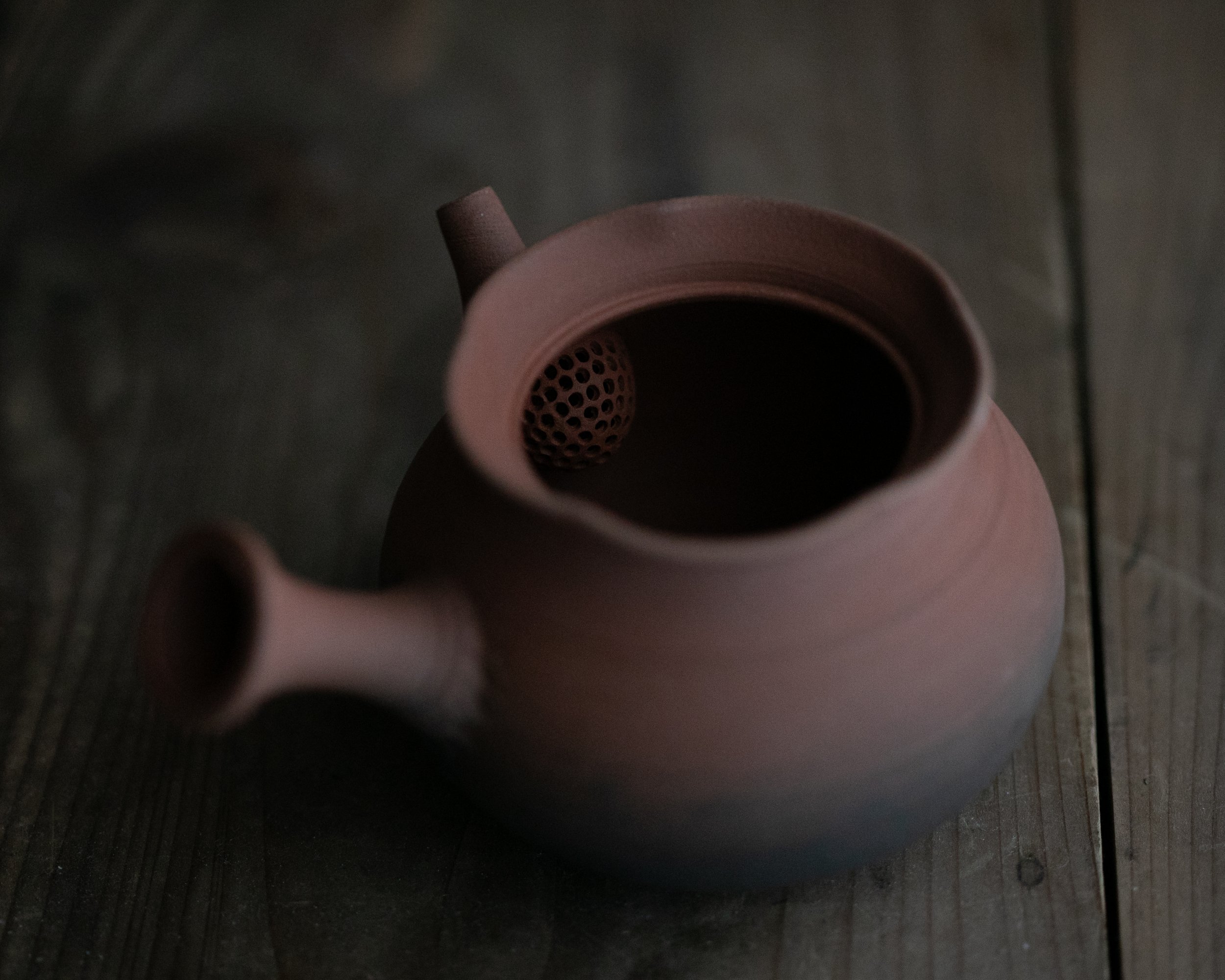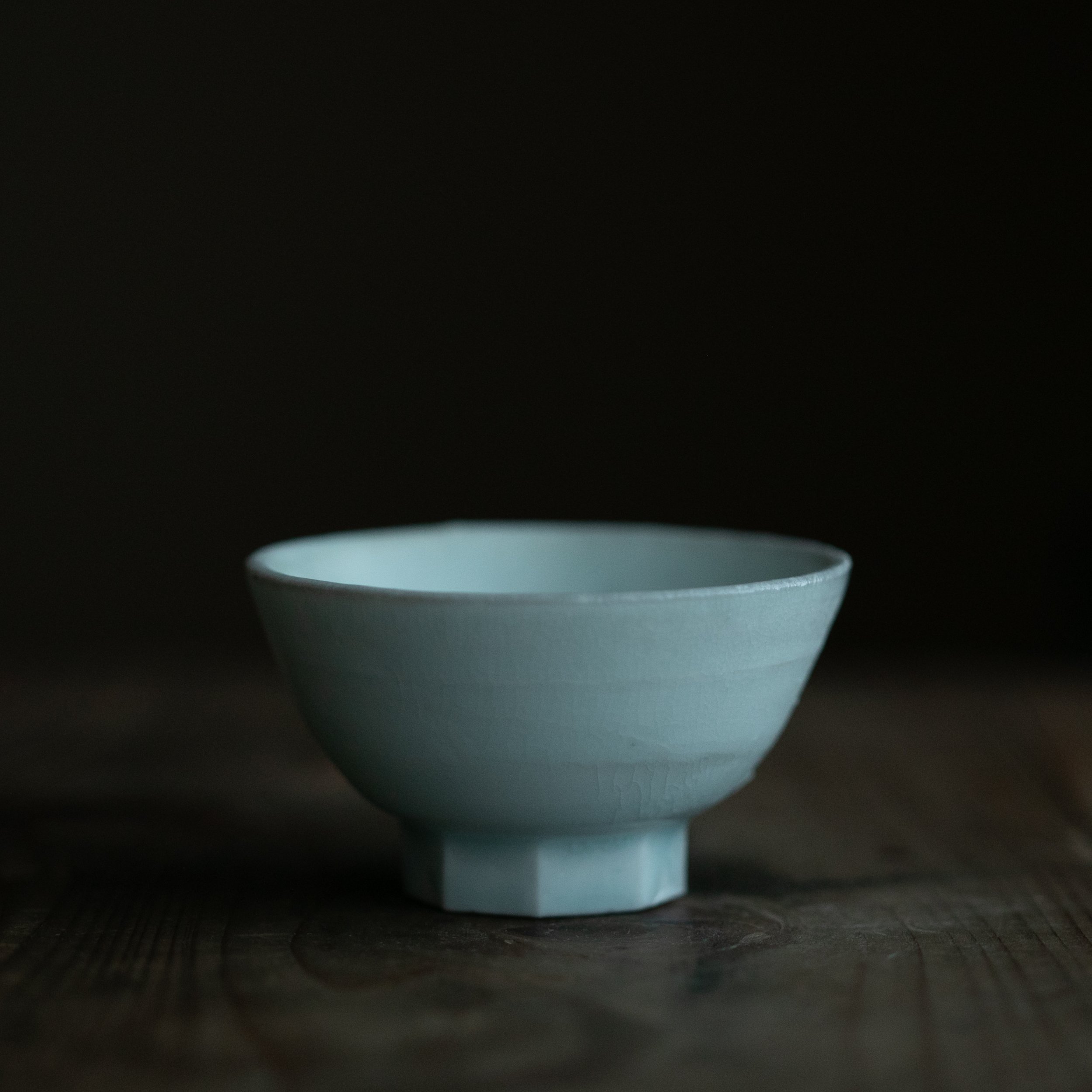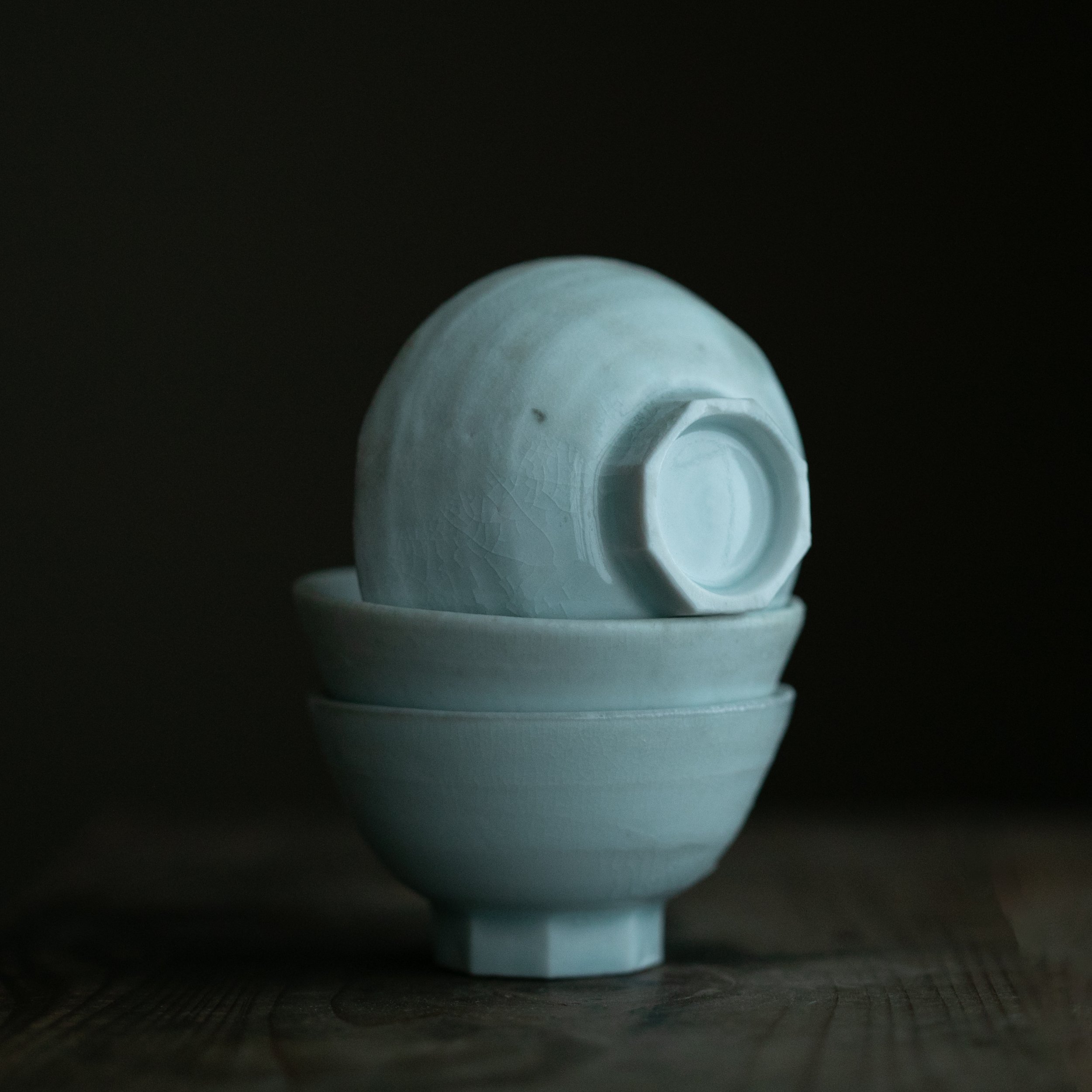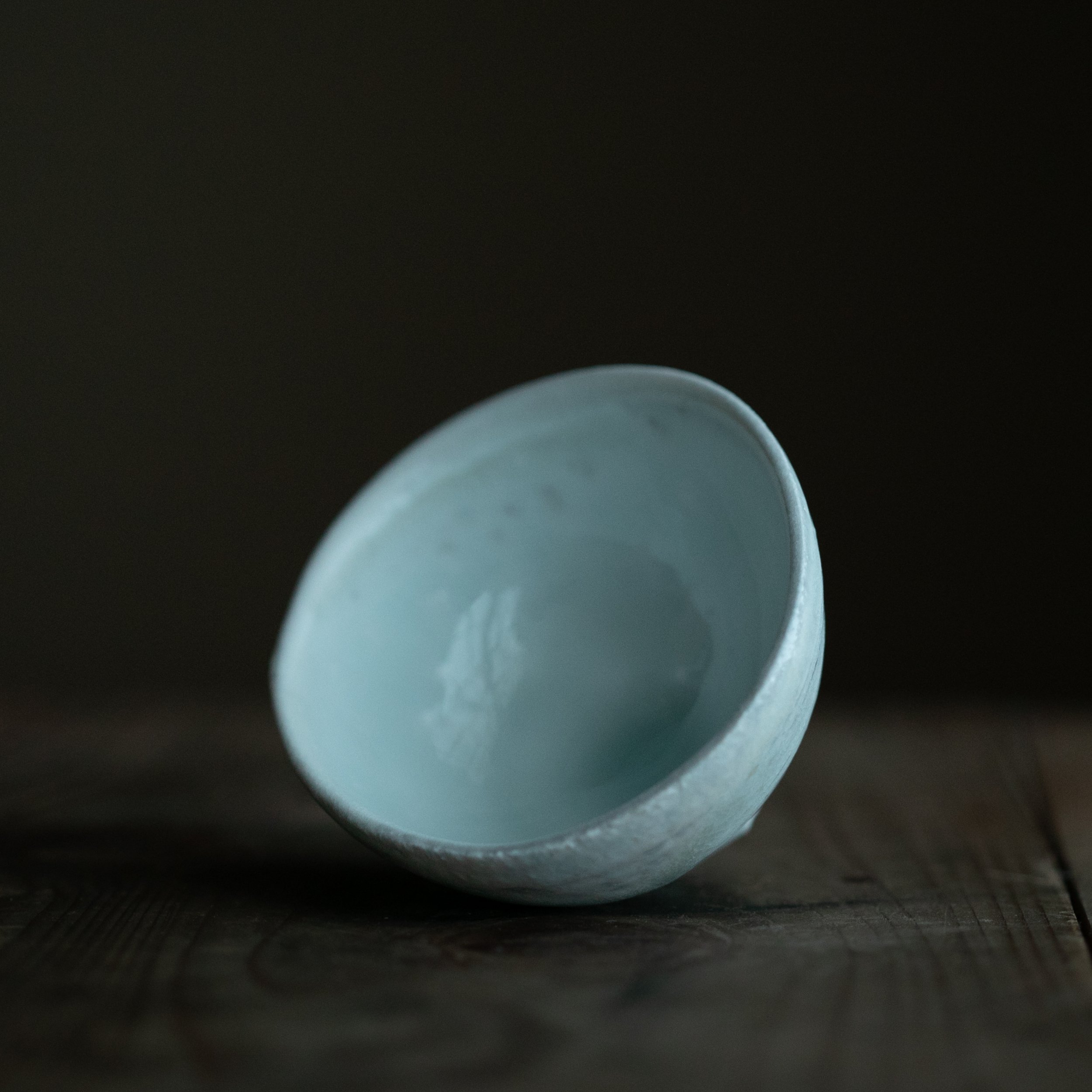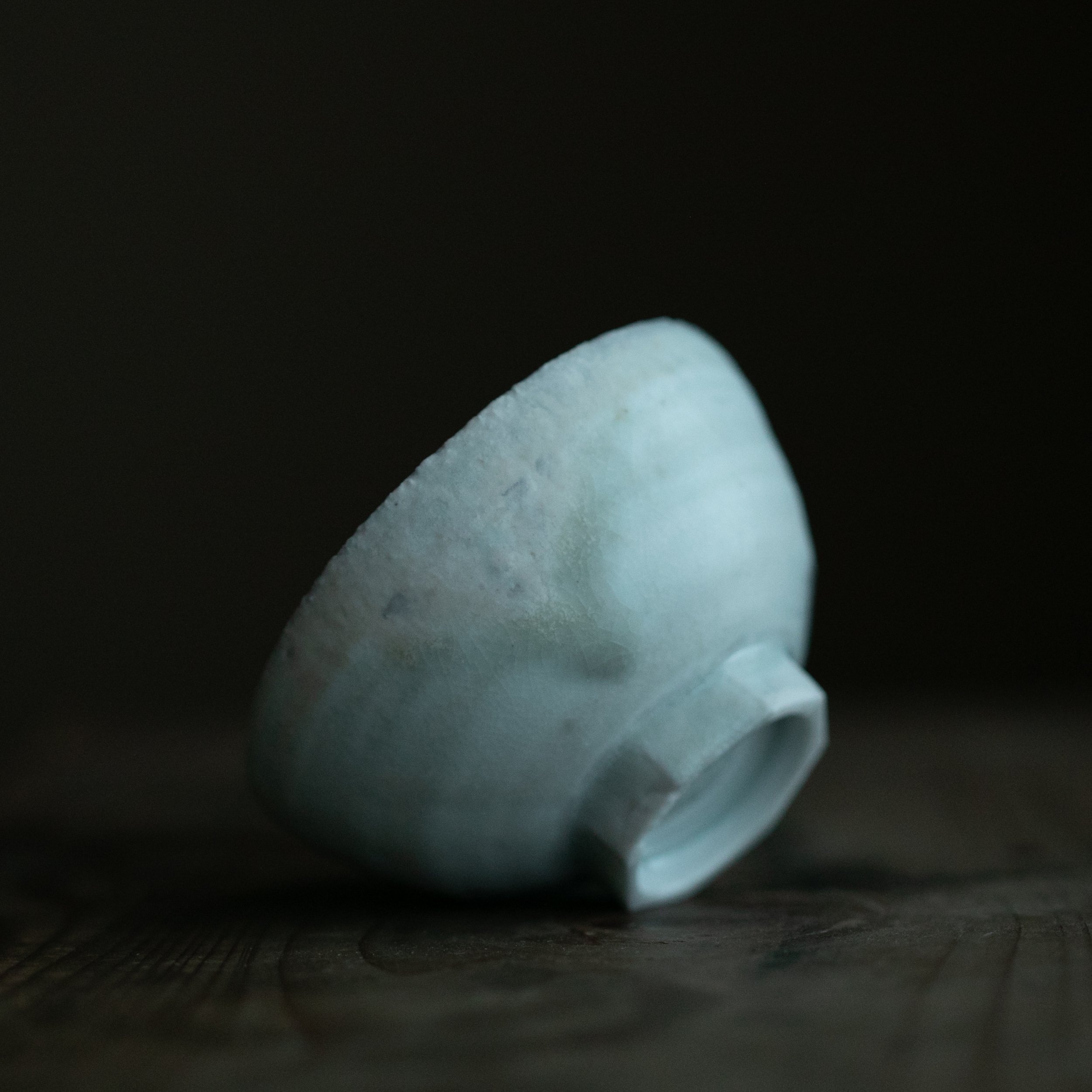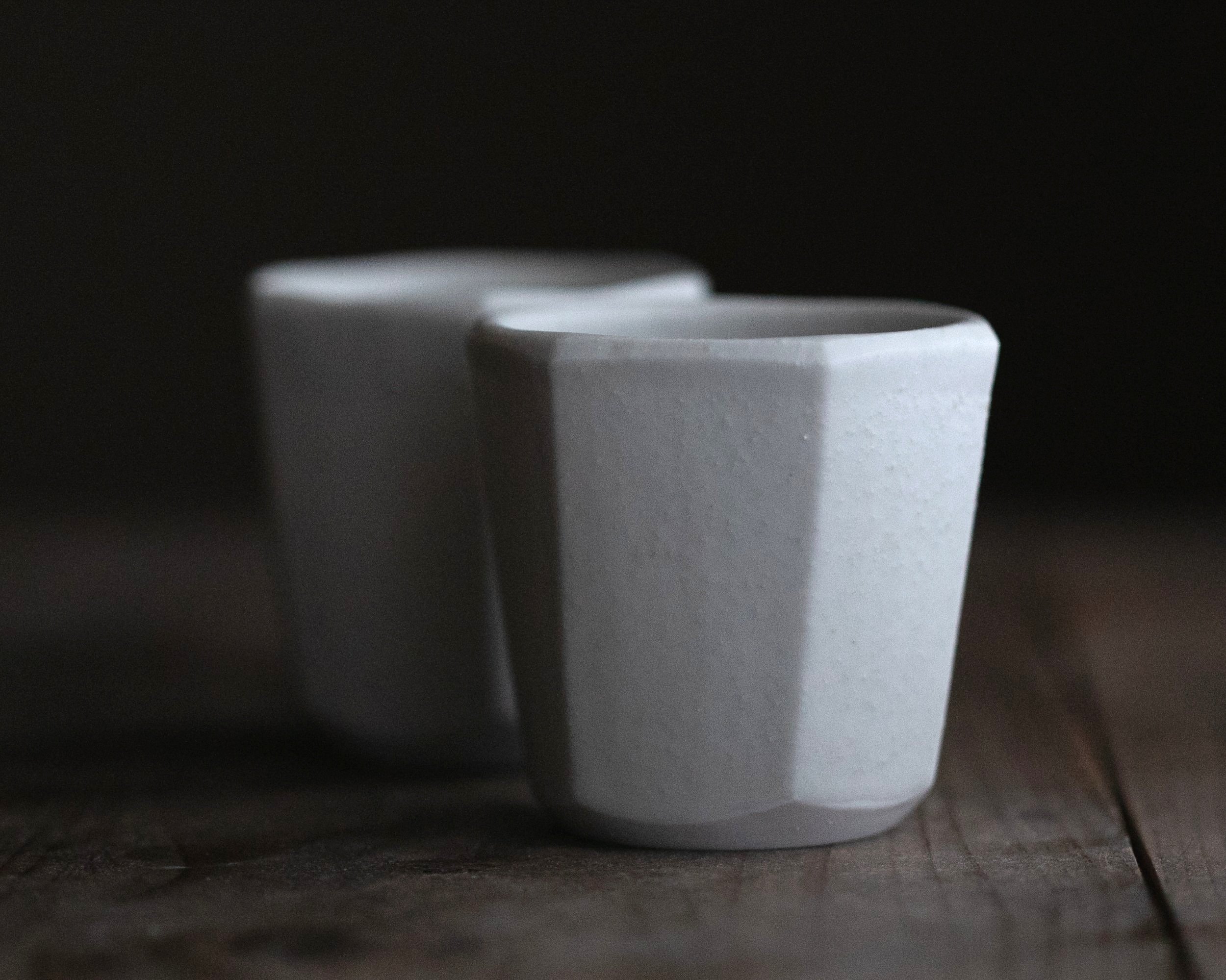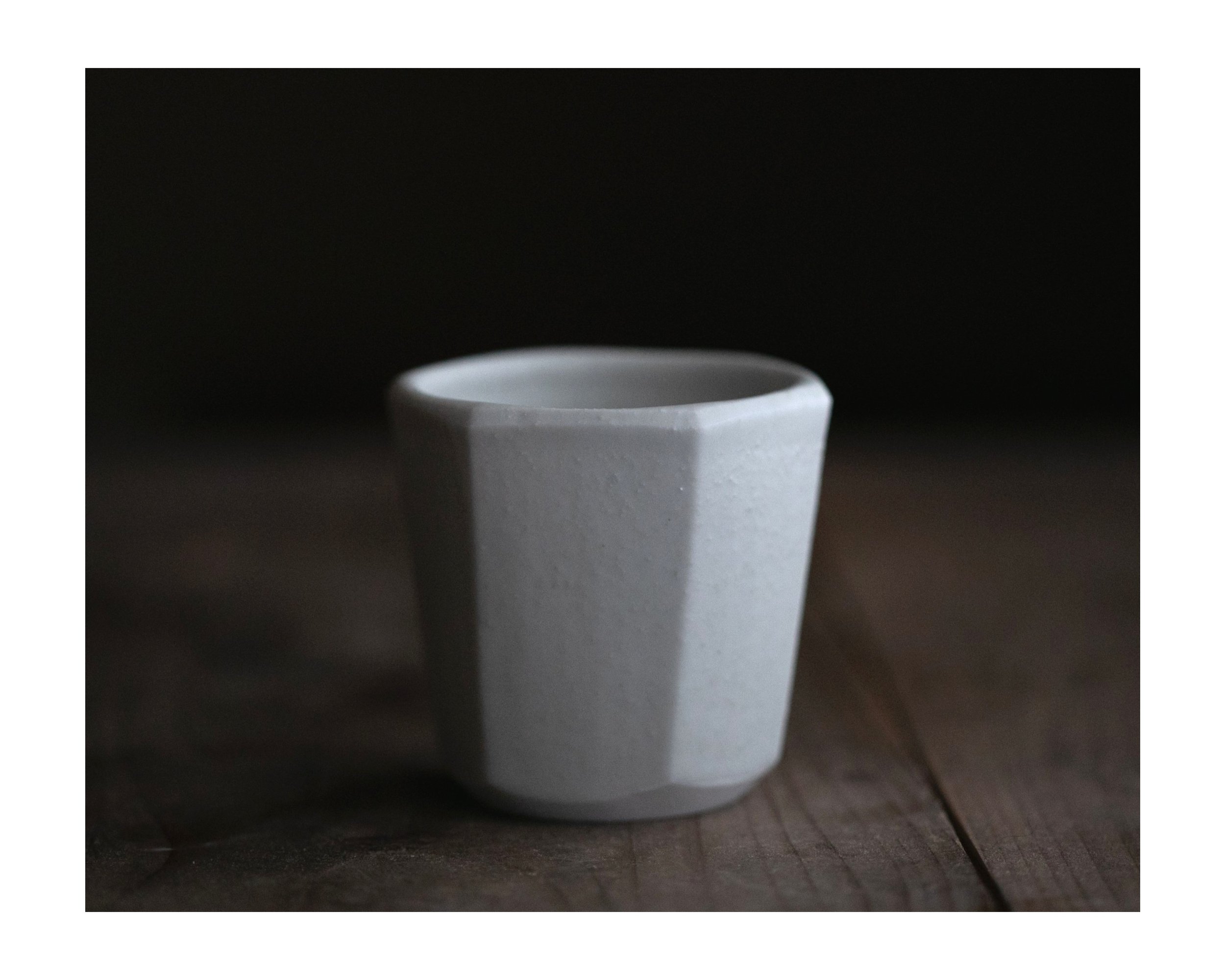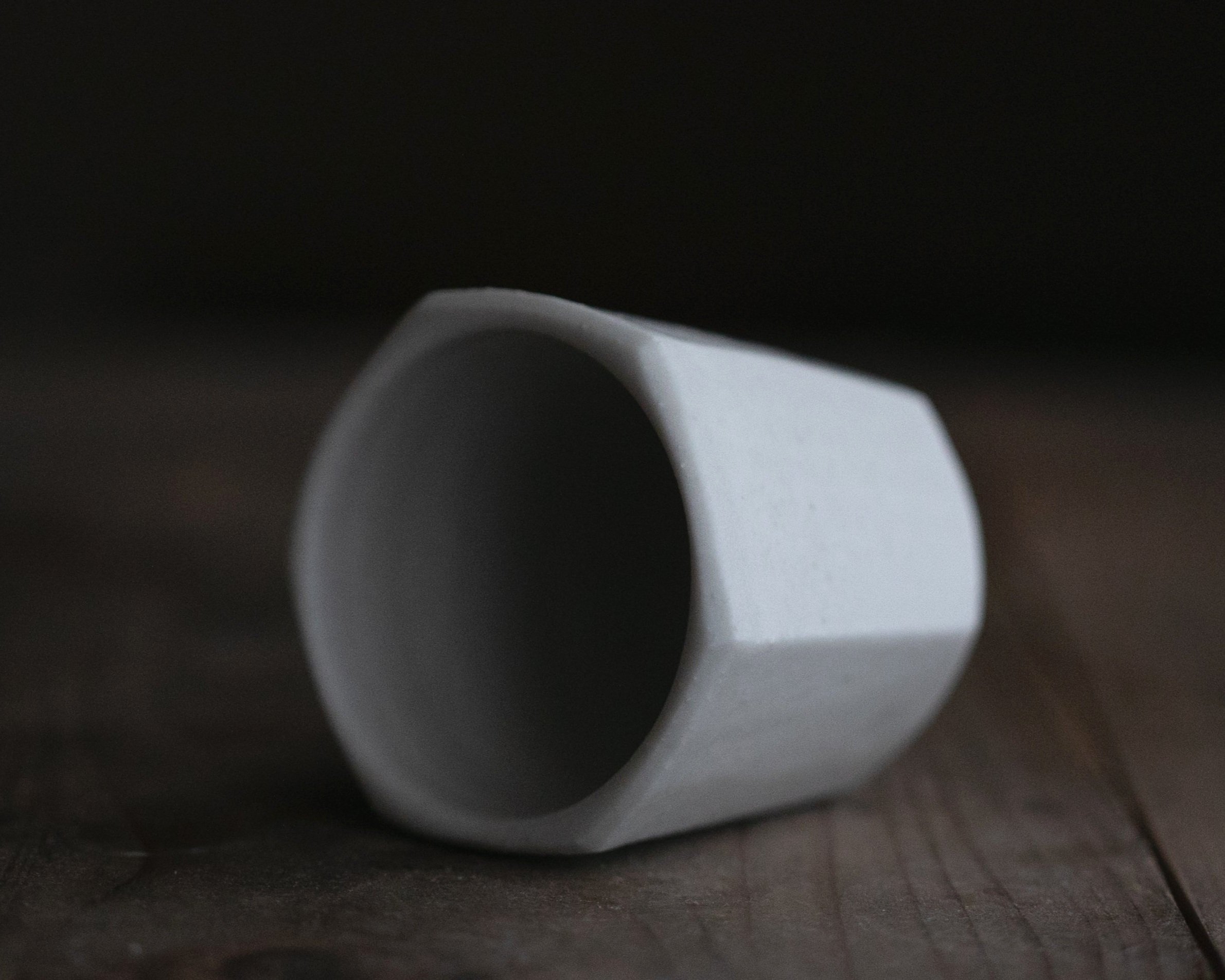Large Sage Katakuchi
Sage Glazed Katakuchi
Late Edo Period Seto Yaki
Found in a small antique shop in Obama, Fuki Prefecture
Sage Glazed Katakuchi
Late Edo Period Seto Yaki
Found in a small antique shop in Obama, Fuki Prefecture
Sage Glazed Katakuchi
Late Edo Period Seto Yaki
Found in a small antique shop in Obama, Fuki Prefecture
-
Approx. dimensions: 24 cm Diameter x 26 cm Length x 10.5 cm Height
-
A katakuchi is a traditional Japanese pouring vessel, typically used for serving sake or as part of the tea ceremony. It is characterised by a lip or spout that allows for controlled pouring without spilling. Katakuchi come in various shapes and sizes, and the design can range from simple and utilitarian to more ornate and decorative, reflecting different regional styles and craftsmanship preferences. This antique vessel was used to transfer sake or soy sauce from a larger jar into bottles, a simple, utilitarian object that has survived the test of time.
Today, they are used as serving bowls, decoration or fruit bowls.
The late Edo period in Japan, from the early 18th century to the mid-19th century, was characterised by a complex array of social, cultural and political developments. Although it was a period of relative peace and stability, Japan faced internal challenges such as economic inequality and social unrest. The rigid class structure of the Tokugawa shogunate began to show signs of strain as the merchant class grew in influence. At the same time, cultural and artistic achievements flourished, with the emergence of ukiyo-e woodblock prints, kabuki theatre and literary masterpieces. The arrival of Commodore Matthew Perry in the mid-19th century marked a pivotal moment, as Japan opened its doors to the world after centuries of isolation. The late Edo period thus serves as a fascinating crossroads, embodying both the resilience of traditional Japanese culture and the seeds of change that would eventually lead to the Meiji Restoration.
In the late Edo period, the Japanese city of Seto was a renowned centre of ceramic artistry, boasting a rich tradition that has endured through the centuries. Famous for its exceptional craftsmanship, Seto's artisans mastered the delicate balance between tradition and innovation, creating pieces that seamlessly blended aesthetic beauty with functionality. During this period, Seto became a centre for the production of a wide range of ceramics, including tea ceremony utensils, sake vessels and decorative pieces. The distinctive Seto glazes, characterised by subtle earth tones and intriguing textures, reflected the city's commitment to excellence. By the late Edo period, Seto's ceramics not only satisfied the demands of local tea practitioners, but also gained national recognition. This era marked a high point in Seto's ceramic legacy, leaving an indelible mark on the history of Japanese ceramics.
-
As with any antique, this piece should be treated with care to preserve its history. This is not to say that it is not to be used, but you should avoid putting it in the dishwasher or microwave to prolong its life. We recommend hand washing with a mild detergent and drying after each use.






